Lab. Tour
Main experimental apparatus
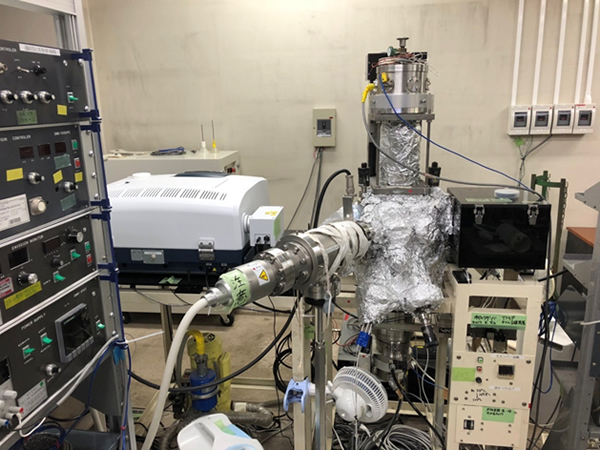
In situ ultra-high vacuum (UHV) cryo-Fourier transform infrared (FT-IR) spectrometer
Molecular thin films are prepared by vacuum deposition, and structural changes can be investigated using in situ FT-IR spectroscopy. Phonon properties can also be investigated at extremely low temperatures. In addition, total reflection spectroscopy can be used to investigate the structure of nanospace materials in solution under atmospheric conditions, and molecular orientation in thin films can be investigated by incident angle resolution (MAIRS).
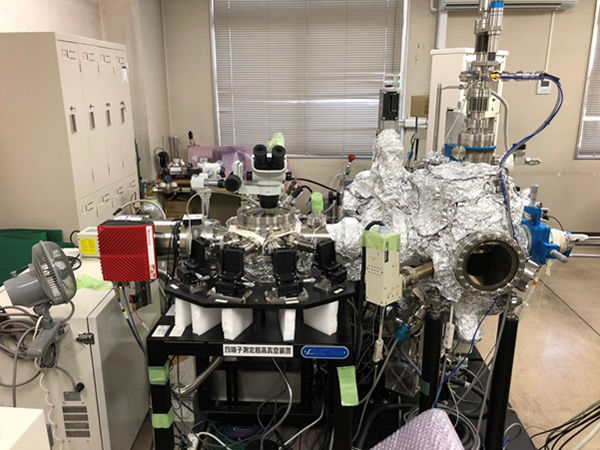
In situ UHV cryo four-probe equipment for evaluation of electrical conductivity and thermoelectric property of thin films
We can fabricate organic solar cells and organic thermoelectric devices under UHV conditions, and investigate their characteristics and mechanisms of electronic conduction, and thermoelectric properties.
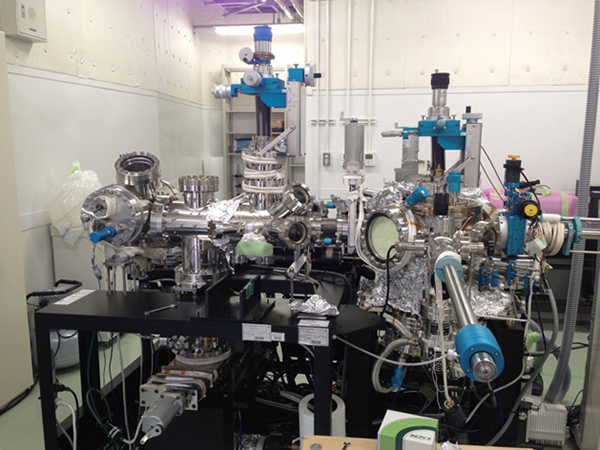
In situ UHV scanning tunneling microscope/spectrometer (STM/STS)
After formation of a molecular layer on a solid surface under UHV conditions, we investigate the surface structure and surface electronic states in combination with first-principles calculations (Gaussian, CASTEP, VASP, etc.).
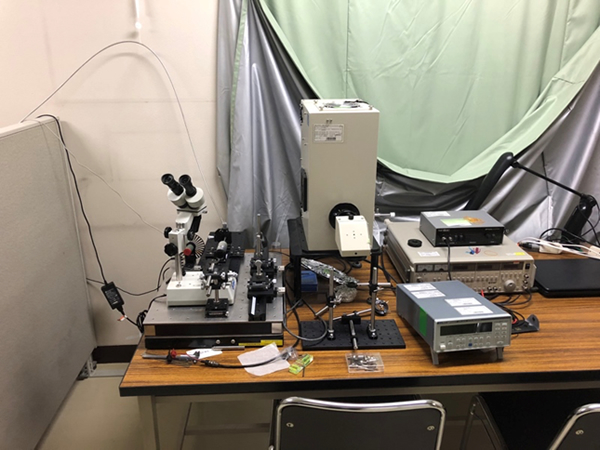
Optical electric-field modulation high-performance action spectrometer
We investigate the energy conversion characteristics of organic solar cells fabricated in a UHV chamber.
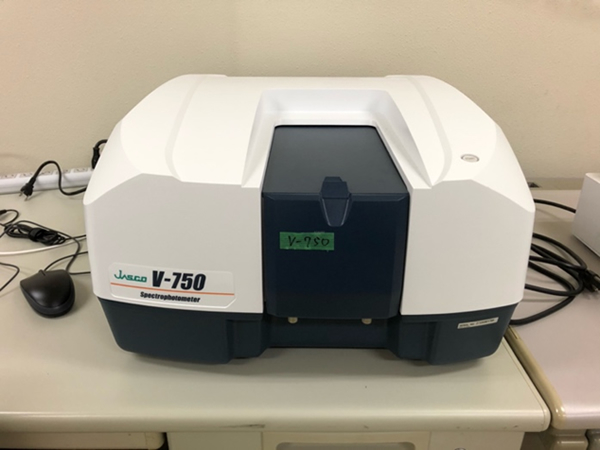
Ultraviolet-visible-near-infrared spectrometer
We investigate the electronic state (electronic transition from the ground state to the excited state) of thin films prepared in a UHV chamber.
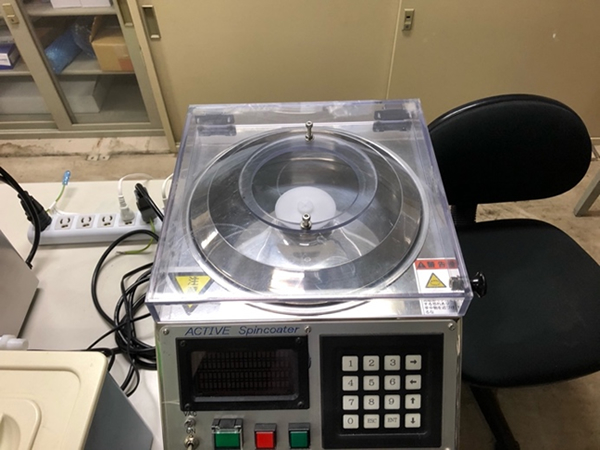
Spin coater
Thin films can be formed on a substrate from colloidal solutions of nanospace materials (Prussian blue and its analogues). By changing the colloid concentration and rotation speed, the film thickness can be controlled at nanometer scale.
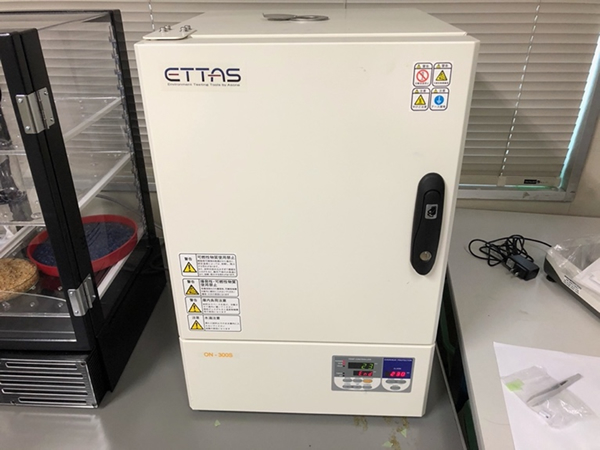
Constant-temperature bath
Annealing treatment (moisture removal) of thin films produced by the spin coater.
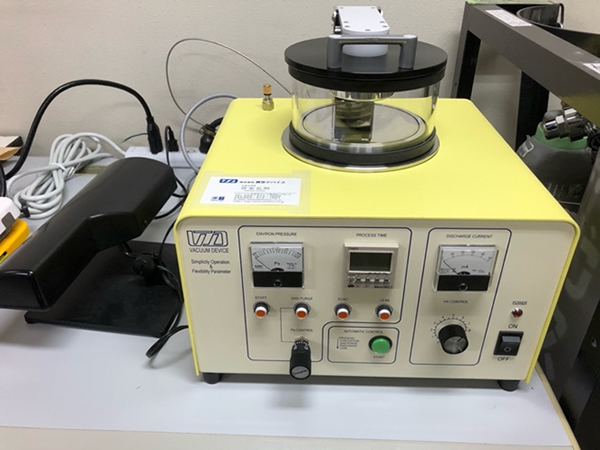
Plasma treatment equipment for substrate surface under atmospheric pressure
Plasma can be used to remove organic contaminants adhering to the substrate surface and modify it to a hydrophilic surface.
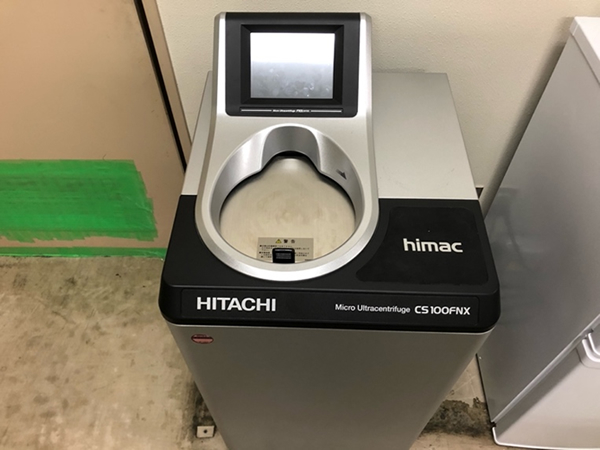
Ultracentrifuge equipment
By applying a centrifugal force of up to 200,000 G (G: gravity), it is possible to isolate nanotubes up to a single nanotube.
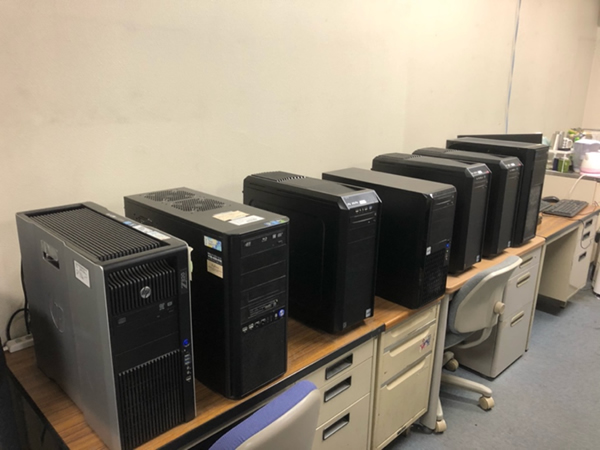
High performance workstation
We analyze experimental results using first-principles calculations (Gaussian, CASTEP, VASP, DV-ME, etc.) and perform functional design of materials by computer experiments.We recently employ machine-learning to explore a higher performance of energy-harvesting materials effectively.
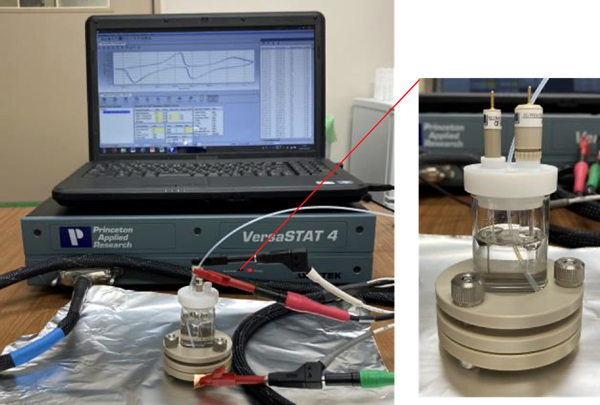
Cyclic voltammetry (electrochemical measurement)/electrochemical cell
It is possible to control the redox states of materials dissolved in solutions and thin films.
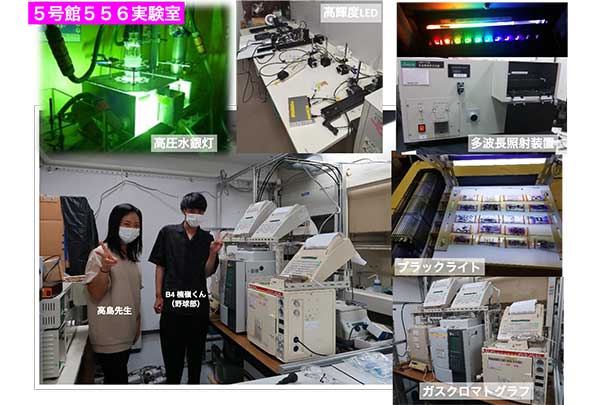
Photocatalysis applied to CO2 reduction and artificial photosynthesis
In 2022, a new photocatalyst research room was launched. By converting light energy directly into chemical energy (oxidation-reduction reaction), we solve environmental and energy issues through research of hydrogen generation and CO2 reduction.
Photos of Lab.
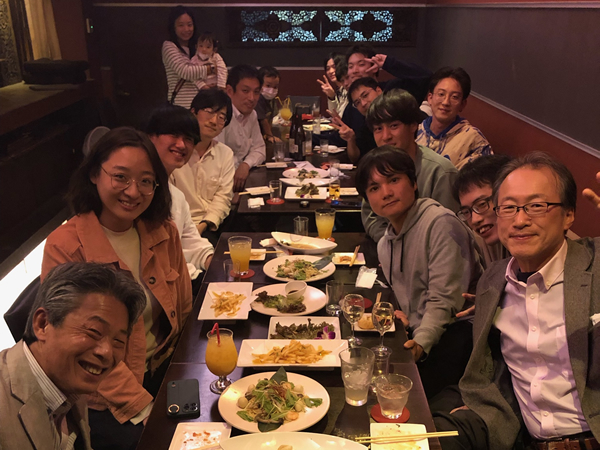
Welcome party for new members and celebration for graduate school exam. (October 27, 2022)
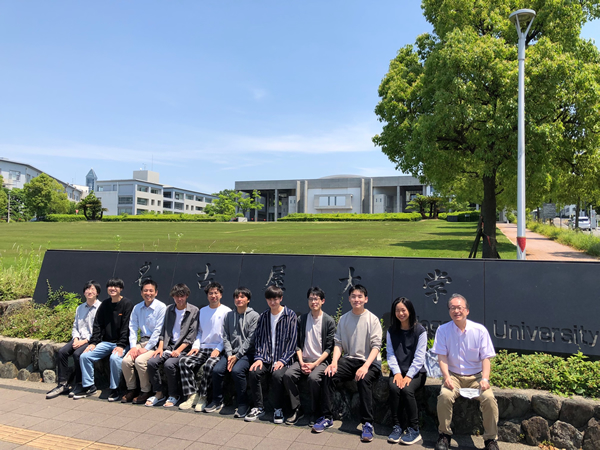
Group photo in front of the green belt in Nagoya University (May 18, 2022)
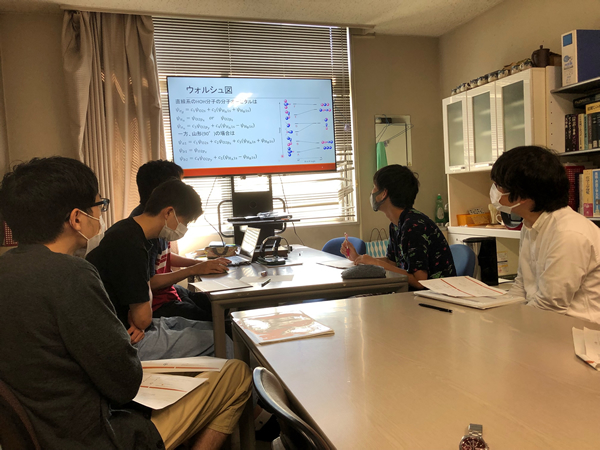
Undergraduate student lecture (August 4, 2021)
(first-grade master's students also participate)
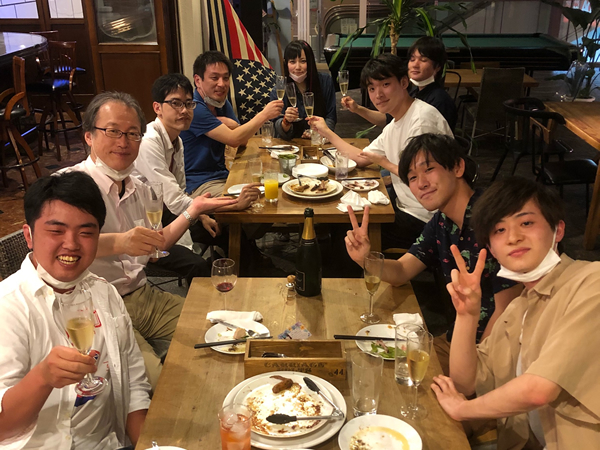
Welcome party for three new students (July 13, 2021)
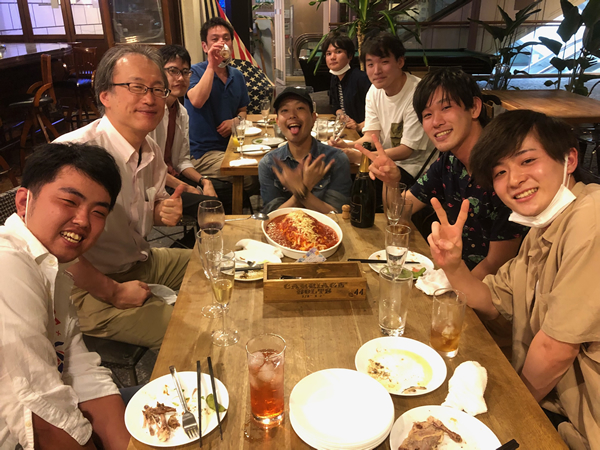
Welcome party for three new students (July 13, 2021)
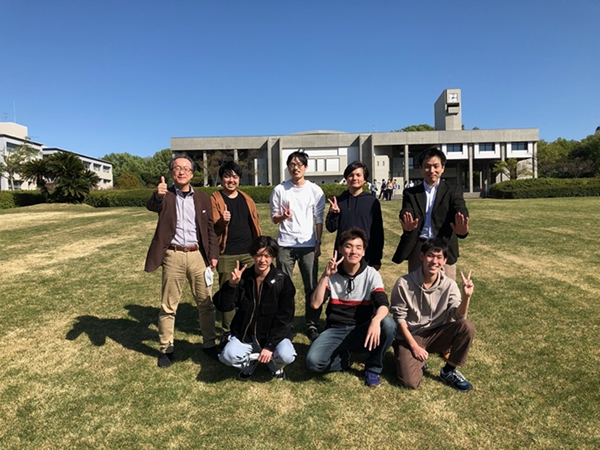
Group photo (April 7, 2021)
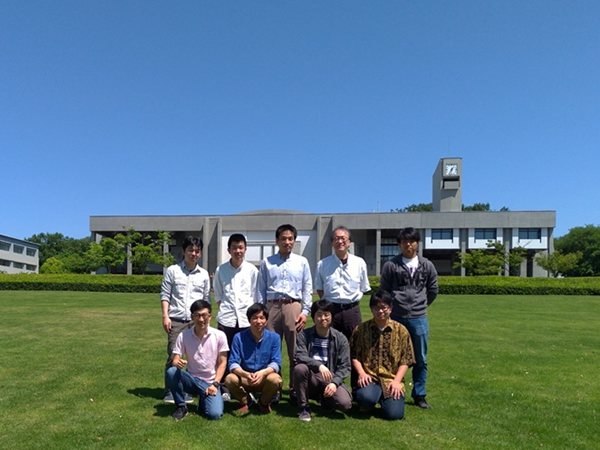
Group photo (May 23, 2019)
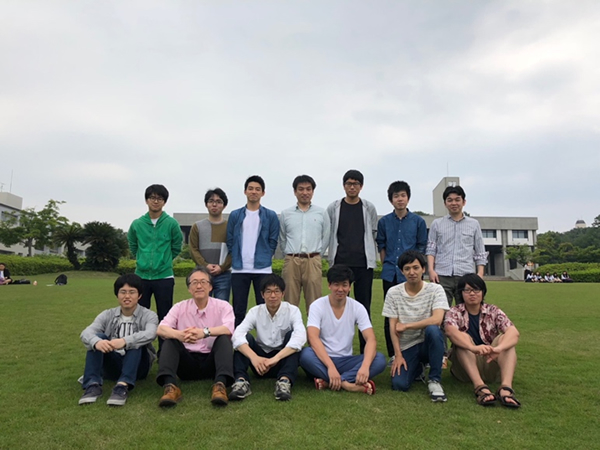
Group photo (May 17, 2018)
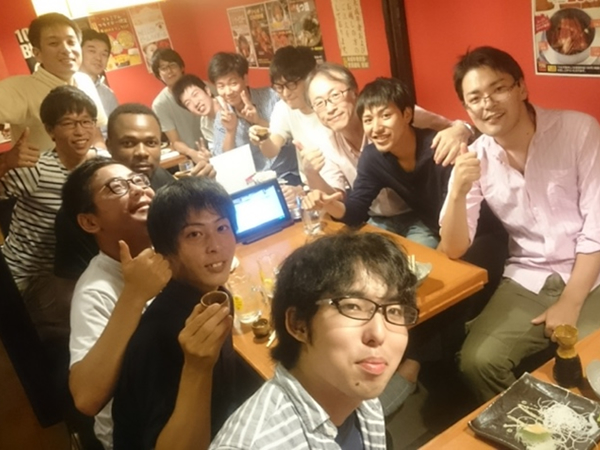
Welcome party for Franck coming from France (Sept. 20, 2017)
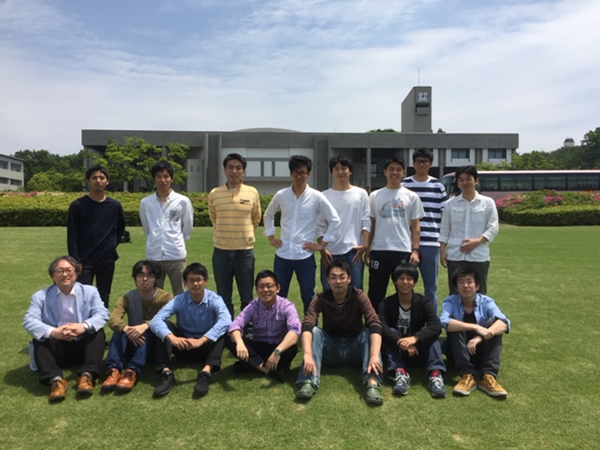
Group photo (May 23, 2017)
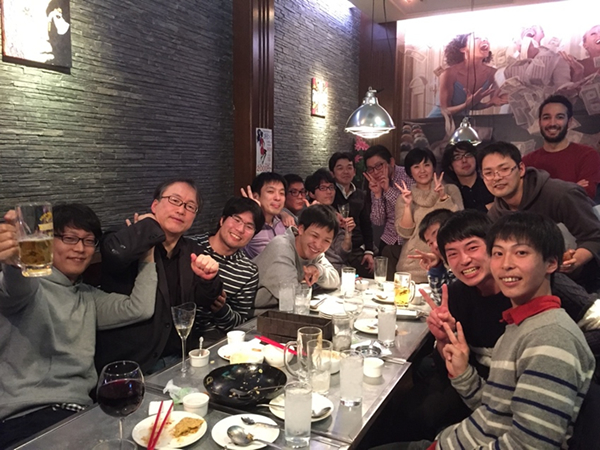
Celebration party for master’s and bachelor’s students (Feb. 24, 2017)
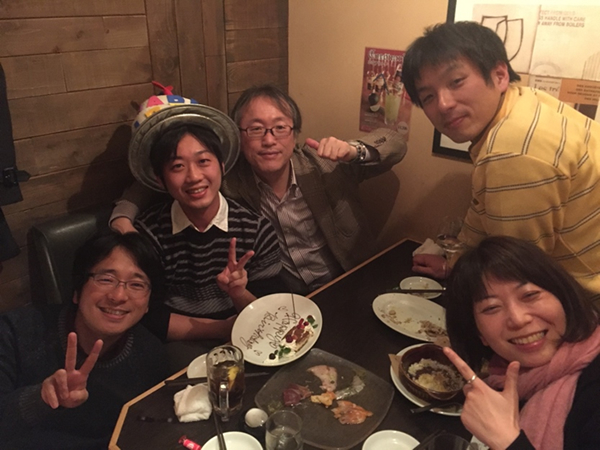
New Year's party after the annual New Year's lecture (Jan. 8, 2017)
Lecturer: Dr. Yukina Takahashi (Associate Professor at Kyushu University),
Dr. Sou Ryuzaki (Associate professor at Hokkaido University), Dr. Akihito Takashima (Idemitsu Kosan)
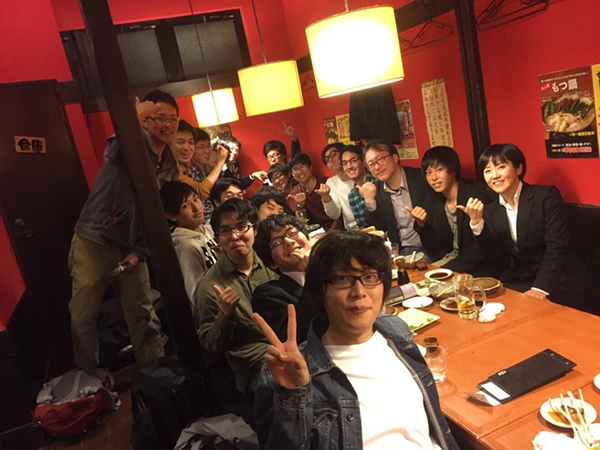
Welcome party (April 11, 2016)
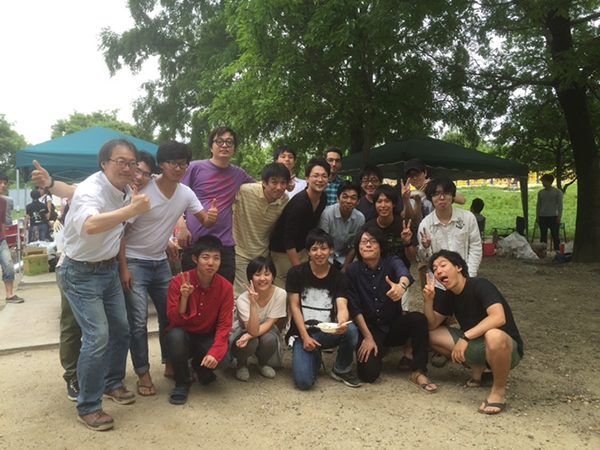
Welcome BBQ party (May 28, 2016) at Tenpaku park
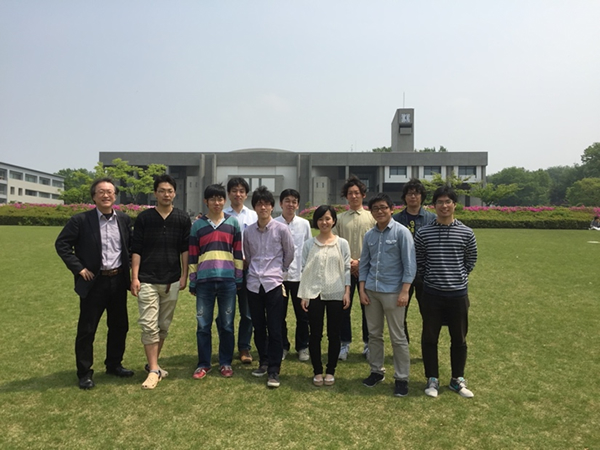
Group photo (April 28, 2015)
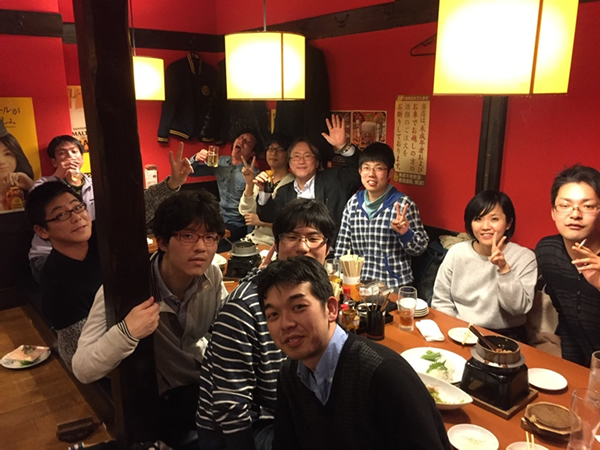
Welcome party (April 11, 2015)
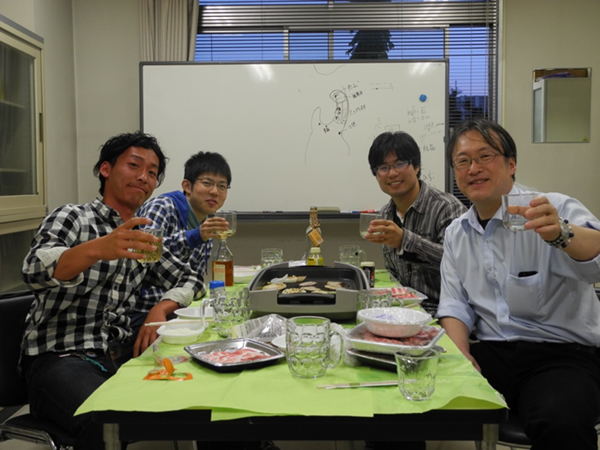
Welcome party for the 1st generation of Onoe lab (Umeda, Kato, Sawada) (Photo taken by Prof. Kentaro Tanaka, Graduate School of Science, Nagoya Univ.)